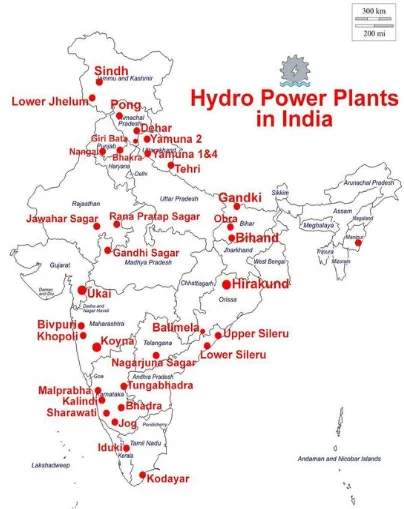![]() June 14, 2024
June 14, 2024
![]() 6185
6185
![]() 0
0
Hydropower harnesses the energy of flowing water from rivers and streams to generate electricity. This renewable and clean energy source has significant environmental and social impacts due to large dams. In India, hydropower’s role has evolved from a dominant source in 1947 to a smaller share today. Globally, hydropower remains the leading renewable energy source, vital for meeting climate goals.

Dominant Renewable Source: Hydropower provides over two-thirds of all renewable electricity globally.
Low Carbon but High Costs: Large storage hydropower projects produce low-carbon electricity but impose significant environmental and social costs.
Engaging Civil Society: Transparency and engagement with affected communities are crucial for sustainable planning.
Renewable Energy Category: Large hydropower projects above 25 MW are classified under renewable energy.
| Must Read | |
| Current Affairs | Editorial Analysis |
| Upsc Notes | Upsc Blogs |
| NCERT Notes | Free Main Answer Writing |
Despite its low-carbon benefits, large hydropower projects can cause significant environmental and social disruption.
| Related Articles | |
| NORTH-EAST INSURGENCY | ENVIRONMENTAL LAWS IN INDIA |
| Energy Transition | The Renewable Energy Challenge: Gap Between Commitments and Actions |
<div class="new-fform">
</div>
Latest Comments